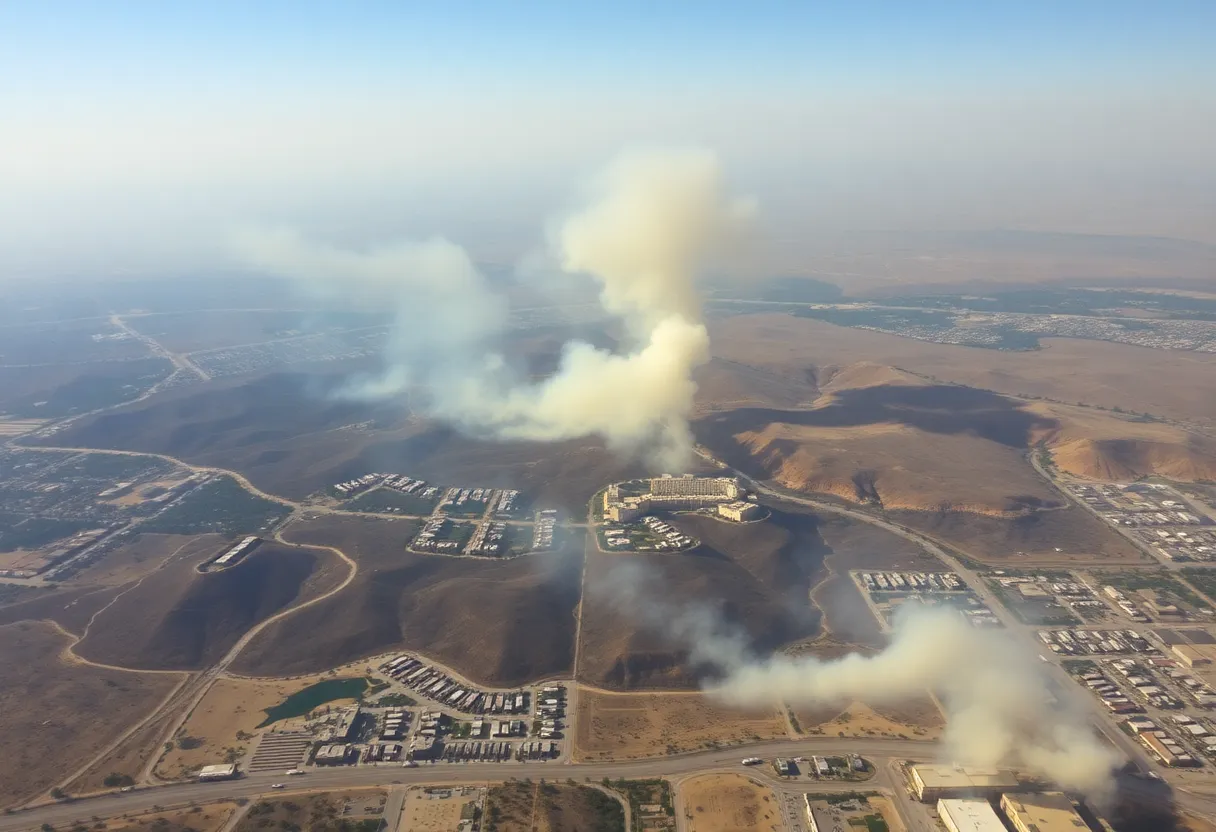News Summary
Health officials warn of serious air quality issues after wildfires in Los Angeles County, with risks from toxic particles that standard measurements fail to capture.
Air Quality Concerns Heightened Following Wildfires in Los Angeles County
In the aftermath of devastating wildfires that have ravaged approximately 38,000 acres in Los Angeles County, health officials are issuing urgent warnings for residents to closely monitor air quality reports. An alarming caution has emerged more than a week after the blazes—the risks extend beyond typical air quality indices, raising red flags among experts and safety officials.
Wildfires’ Aftermath Reveals Hidden Dangers
While many residents rely on standard air quality indices to assess their safety, these metrics fail to account for the toxic particles such as asbestos and lead released during wildfires. These hazardous materials may not be detectable by conventional air monitoring tools, leading officials to advise residents to be vigilant in checking for ash in their immediate air and surroundings.
Experts are actively studying the health impacts of potential contaminants found in ash and atmospheric particles. Testing is underway in Los Angeles County, where the South Coast Air Quality Management District samples air every six days to analyze for toxins, but results may take weeks to materialize, particularly following wildfire events. Furthermore, conventional sensors are often ineffective in capturing toxins in proximity to burn zones, raising significant health concerns.
Safety Recommendations for Residents
To mitigate risks, residents are strongly urged to take precautionary actions. In cases where visible ash is present or smoke is detectable, wearing a mask is highly recommended. Health officials have distributed N95 masks at libraries, recreation centers, senior centers, and disaster resource venues to aid residents. It’s crucial that these masks fit snugly over the nose and mouth without any gaps, and they should be replaced if contaminated.
Wearing an N95 mask can pose challenges for individuals with pre-existing respiratory or cardiac conditions, as it may hinder breathing. Residents are also cautioned against using outdoor brooms or fans that could stir up ash, compounding the hazards. Instead, officials suggest lightly spraying ash with water before sweeping or using a HEPA-filter vacuum for cleanup.
Ongoing Hazmat Efforts and Evacuation Precautions
Meanwhile, hazmat teams, including those from FEMA and the state’s Office of Emergency Management, are conducting thorough block-by-block patrols of affected areas. These crews are focused on identifying unusual thermal patterns and testing for carbon dioxide near burn sites. Despite the grave concerns regarding potential air quality, there is currently no ongoing atmospheric testing for asbestos and lead, considering their potential presence.
Following the fires, which resulted in over 15,400 structures being lost, including homes and businesses, many thousands of residents remain under evacuation orders, as health risks persist. The Santa Ana winds have only exacerbated the situation, amplifying fire weather warnings throughout the region. The South Coast Air Quality Management District has noted that airborne smoke and ash may lead to unhealthy air quality levels across several counties, with the impacts extending to areas south and west of the burn zones.
Long-term Health Implications
Research into the long-term health effects of exposure to fire ash and toxic particles is ongoing, as chemicals within the ash can contribute to severe conditions. Studies have identified risks including cardiovascular diseases, diminished lung function, and neurological issues resulting from ash inhalation. Additionally, there’s increasing concern about potential contamination of drinking water and the negative impact on marine environments due to runoff created by recent rains.
Final Words on Safety Precautions
As the cleanup efforts progress, authorities emphasize the importance of adopting stringent safety measures when returning to wildfire-stricken areas. The risks posed by lingering ash and the potential for mudslides during rainfalls demand continued caution. Residents should prioritize their health and safety as authorities work diligently to assess and remediate hazards from the wildfires.
Deeper Dive: News & Info About This Topic
HERE Resources
Wildfires in Pacific Palisades Raise Alarming Concerns Over Asbestos Exposure
Community Golf Event to Honor Liam Exley
The Fight Against Mesothelioma: A Glimmer of Hope in Cancer Treatment
Understanding the Complex Battle Against Mesothelioma
The Hidden Dangers of Asbestos: What You Need to Know
Widow’s Plea for Memories of Rugeley B Power Station Workers
The Ongoing Saga of Hotel O: A Demolition Delayed by Asbestos Concerns
Penobscot County’s $2 Million Asbestos Dilemma: A Community’s Burden and Opportunity
Asbestos Concerns Spark Urgent Responses in School Renovations
Asbestos Violations Shake Oregon’s Construction Sector



















